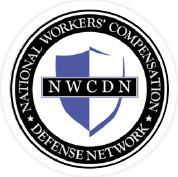Citing Benefits, OSHA Warns Of Penalties For Avoiding Injury Reporting Rule
| OSHA chief David Michaels is touting the benefits of the agency’s stricter injury reporting rule after its first-year of implementation, but is warning that the many businesses that are still avoiding the rule’s requirements could face increased noncompliance penalties once the agency raises its penalty amounts in an upcoming rule authorized by Congress.
“Employers are choosing not to report because they perceive the cost of not reporting to be low. They should know that, now that the requirement is in its second year, OSHA is more likely to cite for non-reporting,” Michaels said in a March 17 report, “Year One of OSHA’s Severe Injury Reporting Program: An Impact Evaluation.” But he added that penalties will “increase even more when higher penalty levels recently approved by Congress take effect.” The report compiled data from the first-year of implementing OSHA’s severe injury reporting rule, which Michaels said has helped officials better target enforcement resources to high-risk areas and work with employers to “identify and eliminate hazards, rather than conducting a worksite inspection.” “Experience in the field and data from more than 10,000 reports of severe injuries tell us that both goals are being met. We are confident that the events triggered by these reports have eliminated the potential for many more thousands of injuries in U.S. workplaces,” the report says. The report assessed the results of the 2014 rule, “Occupational Injury and Illness Recording and Reporting Requirements — NAICS Update and Reporting Revisions,” that, among other things, requires employers to notify OSHA within 24 hours in the event of any work-related amputation, in-patient hospitalization or loss of an eye, along with a sweeping update to work site classification codes for injury logs. OSHA later clarified the new reporting requirements on worker amputations and eye loss delineating the circumstances under which such events are reportable. For example, in a clarifying letter, OSHA said that blindness that does not result in eye removal or inpatient hospitalization does not fall under the new requirements. But an occurrence causing blindness where the worker is hospitalized as an inpatient must be reported within 24 hours, according to OSHA. In all, the report found employers in federal OSHA states reported more than 10,000 incidents, including almost 7,000 hospitalizations and almost 3,000 amputations. OSHA says this amounts to 30 work-related severe injuries per day. The report says in many cases OSHA was able to use the reported injury to encourage employers to evaluate their own processes and equipment and determine what went wrong. “Working with OSHA, many employers have found ways to eliminate hazards and protect other workers from the same injuries,” the report says. OSHA Responses OSHA says it responded to 62 percent of the 2015 reports, including 69 percent of hospitalization reports, by asking employers to conduct Rapid Response Investigations (RRI), in which employers work with regional offices to assess practices and develop remedies. “In a typical RRI, the employer analyzes the incident to identify the causes and presents to OSHA its findings and proposed abatements,” the report says. But OSHA also responded to about a third of all injury reports, and 58 percent of amputation reports, with an inspection that enabled regulators to “investigate firsthand the immediate cause of the incident and learn whether hazards remained to threaten the health and safety of workers.” Michaels said that most employers that experienced a severe injury “were eager to cooperate with OSHA inspectors to prevent anything similar or worse from happening again. In fact, many went above and beyond what was required by OSHA to protect their employees.” The inspections also helped OSHA gain insights into some emerging industries, like suppliers of oil and gas operations, that until now have had relatively few inspections. Michaels adds that in “hundreds of cases,” OSHA interactions have resulted in “larger changes” to companies’ overall safety program. “Some employers have changed their incentive programs to reward activities that abate hazards and prevent injuries, rather than offering prizes for not reporting injuries. Others hired safety and health consultants to review potentially hazardous work practices, or signed up for OSHA’s free and confidential on-site consultation services,” the report says.. Despite the documented benefits of the rule, Michaels says as many as 50 percent of severe injuries are still not being reported, especially among small and mid-sized employers. He says the agency plans to stepup outreach strategies to inform them of the requirements. And in some cases, OSHA has even found employers who, despite a “horrific employee injury,” continue to put workers at risk and even seek to “hide hazards in order to avoid fixing them.” And he warns that employers that fail to comply — either with the reporting requirements or other obligations — will face increased penalties under OSHA’s upcoming rule, authorized by the fiscal year 2016 budget deal, that is expected to raise penalties for noncompliance for the first time since 1990. |

